Documentos 1. Art, Words and Memory in the Texts of Gómez de Liaño
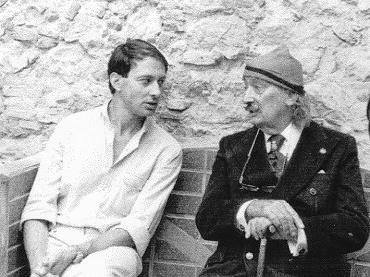
Ignacio Gómez de Liaño and Salvador Dalí in the Empordà artist’s house in Portlligat, September 12, 1978
Held on 13 oct 2016
The programme Documentos, which revolves around themes related to the Museo Reina Sofía Documentation Centre, presents its first activity: Art, Words and Memory in the Texts of Gómez de Liaño, a round-table discussion which looks at the output of Ignacio Gómez de Liaño.
Since the 1960s, Ignacio Gómez de Liaño has written numerous texts on an array of contemporary artists, with his work reflecting the diversity of the trends and styles that distinguish these creators’ output. Equally, this quality responds to the eclectic spirit and multi-faceted personality of the author himself: a philosopher, historian, narrator, poet, translator...
In his writings, which have recently come to the fore in the collection entitled Libro de los artistas (The Book of Artists, Ediciones Asimétricas, 2016), critical analysis, sentimental memory and literary volition converge, as does a decisive premise that safeguards the unity of the whole: the friendship he maintained with each artist to which he dedicated his biographical sketches and essays. This circumstance implies not only direct knowledge of the works but also the living context, enabling him to orbit the surface of the artistic activity in order to examine the relationship between the visible and the utterable: “There is nothing like looking at the deed to know what the words mean”.
This round-table discussion features the participation of Alain Arias-Misson, Selina Blasco, Ignacio Gómez de Liaño and José María Parreño, and is moderated by José Luis Gallero.
Participants
Alain Arias-Misson (Brussels, 1936) is an artist, novelist and essayist. Born to an English mother and a Belgian father, he grew up and studied in New York. He earned a degree in Greek and French Literature from Harvard University, and, in the 1960s, was a pioneer of the experimental poetry movement in Spain, along with Joan Brossa, Herminio Molero and Ignacio Gómez de Liaño. He invented “public poems”, which he created from 1967 in Brussels – and in Madrid in 1969 – citing them as a way for him to “write on the page of the street”. His works have been displayed in numerous exhibitions and have been published in anthologies in Europe, the USA, South America and Japan.
Selina Blasco (Madrid, 1959) has a PhD in Art History from the Complutense University of Madrid and is a professor of Art Theory and History at the same university’s Faculty of Fine Arts. Since writing her dissertation La fundación del Escorial de fray José de Sigüenza (The Foundation of the El Escorial of Brother José de Sigüenza), she has specialised in literary art and texts on art and architecture, as well as the more general field of the relationship between text and image. Her recent publications include: Mariano Fortuny: la casa y la tela (Mariano Fortuny: House and Cloth, 2013) and Mantener las formas. La academia en y desde las prácticas artísticas (Maintaining Forms. The Academy in and from Artistic Practices, 2013).
José Luis Gallero (Barcelona, 1954) is an editor, art critic and exhibition curator. Among other works, he has published Solo se vive una vez: esplendor y ruina de la movida madrileña (You Only Live Once: Splendour and Ruin in the Madrid Movida Movement, 1991) and Heráclito: Fragmentos e interpretaciones (Heraclitus: Fragments and Interpretations, 2009). Furthermore, he has worked on preparing the editions of critical text collections on Quico Rivas, Cómo escribir de pintura sin que se note (How to Write About Painting Inconspicuously, 2011) and Ignacio Gómez de Liaño, Libro de los artistas (The Book of Artists, 2016).
Ignacio Gómez de Liaño (Madrid, 1946) is a writer, philosopher and professor of Aesthetics. He has lectured at the Advanced School of Architecture, Madrid, the Faculty of Political Science and the Faculty of Philosophy at the Complutense University of Madrid, as well as universities in Osaka and Beijing. He is a regular contributor in numerous media, and the author of works that span from poetry and theatre to art, philosophy and personal journals. His noteworthy publications include Athanasius Kircher: Itinerario del éxtasis o las imágenes de un saber universal (Athanasius Kircher: Itinerary of Ecstasy or the Images of Universal Knowledge, 1986), Iluminaciones filosóficas (Philosophical Illuminations, 2001), Sobre el fundamento (On the Foundation, 2002), En la red del tiempo. 1972 1977 (In the Network of Time, 1972-1977, 2013) and Libro de los artistas (The Book of Artists, 2016), his most recent work.
José María Parreño (Madrid, 1958) is a professor in the Faculty of Fine Arts at the Complutense University of Madrid. He was previously deputy director of the Museo de Arte Contemporáneo Esteban Vicente, Segovia, from 1998 to 2004, and director between 2004 and 2007. He is also an art critic and exhibition curator and has published a dozen books of essays and poetry, the most recent of which include Arte y Ecología (Art and Ecology, 2014) and Pornografía para insectos (Pornography for Insects, 2015).

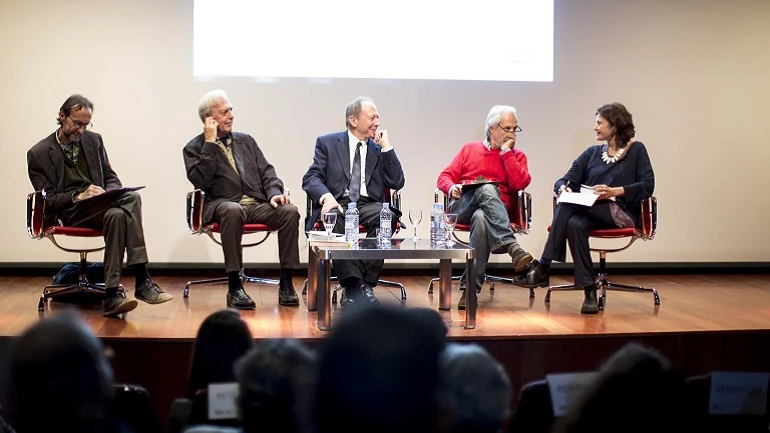
Más actividades

Oliver Laxe. HU/هُوَ. Dance as if no one were watching you
Tuesday, 16 December 2025 – 7pm
As a preamble to the opening of the exhibition HU/هُوَ. Dance as if no one were watching you, film-maker Oliver Laxe (Paris, 1982) engages in conversation with the show’s curators, Julia Morandeira and Chema González, touching on the working processes and visual references that articulate this site-specific project for the Museo Reina Sofía. The installation unveils a new programme in Space 1, devoted from this point on to projects by artists and film-makers who conduct investigations into the moving image, sound and other mediums in their exhibition forms.
Oliver Laxe’s film-making is situated in a resilient, cross-border territory, where the material and the political live side by side. In HU/هُوَ. Dance as if no one were watching you, this drift is sculpted into a search for the transcendency that arises between dancing bodies, sacred architectures and landscapes subjected to elemental and cosmological forces. As a result, this conversation seeks to explore the relationship the piece bears to the imagery of ancient monotheisms, the resonance of Persian Sufi literature and the role of abstraction as a resistance to literal meaning, as well as looking to analyse the possibilities of the image and the role of music — made here in collaboration with musician David Letellier, who also works under the pseudonym Kangding Ray — in this project.
These inaugural conversations, part of the main working strands of the Museo’s Public Programmes Area, aim to explore in greater depth the exhibition narratives of the shows organised by the Museo from the perspective of artists, curators and specialists.
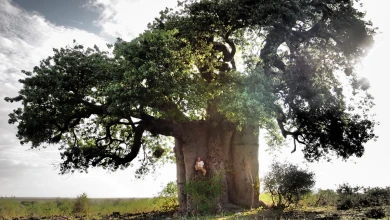
Francisco López and Barbara Ellison
Thursday, 11 December - 8pm
The third session in the series brings together two international reference points in sound art in one evening — two independent performances which converse through their proximity here. Barbara Ellison opens proceedings with a piece centred on the perceptively ambiguous and the ghostly, where voices, sounds and materials become spectral manifestations.
This is followed by Francisco López, an internationally renowned Spanish sound artist, who presents one of his radical immersions in deep listening, with his work an invitation to submerge oneself in sound matter as a transformative experience.
This double session sets forth an encounter between two artists who, from different perspectives, share the same search: to open ears to territories where sound becomes a poetic force and space of resistance.
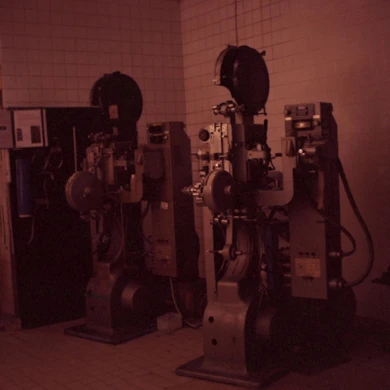
Long Live L’Abo! Celluloid and Activism
4, 5, 6 DIC 2025
L’Abominable is a collective film laboratory founded in La Courneuve (Paris, France) in 1996. It came into being in response to the disappearing infrastructures in artisan film-making and to provide artists and film-makers with a self-managed space from which to produce, develop and screen films in analogue formats such as Super 8, 16mm and 35mm. Anchored in this premise, the community promotes aesthetic and political experimentation in analogue film opposite digital hegemony. Over the years, L’Abominable, better known as L’Abo, has accompanied different generations of film-makers, upholding an international movement of independent film practices.
This third segment is structured in three sessions: a lecture on L’Abo given by Pilar Monsell and Camilo Restrepo; a session of short films in 16mm produced in L’Abo; and the feature-length film Une isle, une nuit, made by the Les Pirates des Lentillères collective.
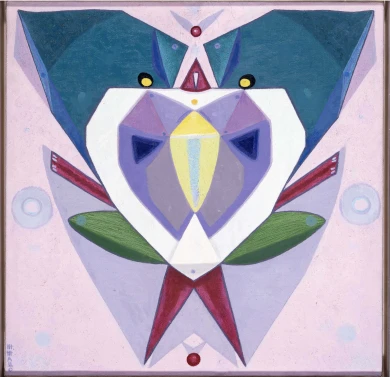
Estrella de Diego Lecture. Holding Your Brain While You Sleep
Wednesday, 3 December 2025 – 7pm
Framed inside the Museo Reina Sofía’s retrospective exhibition devoted to Maruja Mallo, this lecture delivered by Estrella de Diego draws attention to the impact of the artist’s return to Spain after her three-decade exile in Latin America.
Committed to values of progress and renewal in the Second Republic, Mallo was forced into exile to Argentina with the outbreak of the Civil War and would not go back to Spain to settle definitively until 1965 — a return that was, ultimately, a second exile.
Mallo saw out her prolific artistic trajectory with two impactful series: Moradores del vacío (Dwellers of the Void, 1968–1980) and Viajeros del éter (Ether Travelers, 1982), entering her most esoteric period in which she drew inspiration from her “levitational experiences” of crossing the Andes and sailing the Pacific. Her travels, both real and imaginary, became encounters with superhuman dimensions.
In parallel, her public persona gained traction as she became a popular figure and a key representative of the Generation of ‘27 — the other members of which also started returning to Spain.
This lecture is part of the Art and Exile series, which seeks to explore in greater depth one of the defining aspects of Maruja Mallo’s life and work: her experience of exile. An experience which for Mallo was twofold: the time she spent in the Americas and her complex return to Spain.
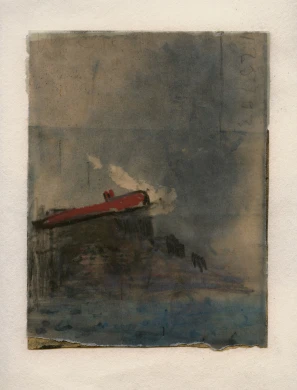
Juan Uslé. That Ship on the Mountain
Tuesday, 25 November 2025 – 7pm
Ángel Calvo Ulloa, curator of the exhibition Juan Uslé. That Ship on the Mountain, engages in conversation with artist Juan Uslé (Santander, 1954) in the Museo’s Auditorium 400 to explore in greater depth the exhibition discourse of this anthological show spanning four decades of Uslé’s artistic career.
The show casts light on the close relationship Uslé’s work bears to his life experiences, establishing connections between different stages and series which could ostensibly seem distant. Framed in this context, the conversation looks to explore the artist’s personal and professional journey: his memories, experiences of New York, his creative process, conception of painting, and ties with photography and film, and the cohesiveness and versatility that characterise his art. Key aspects for a more in-depth understanding of his artistic sphere.
The conversation, moreover, spotlights the preparatory research process that has given rise to this exhibition to grant a better understanding of the curatorial criteria and decisions that have guided its development.
These inaugural conversations, part of the main working strands of the Museo’s Public Programmes Area, aim to explore in greater depth the exhibition narratives of the shows organised by the Museo from the perspective of artists, curators and specialists.



![Miguel Brieva, ilustración de la novela infantil Manuela y los Cakirukos (Reservoir Books, 2022) [izquierda] y Cibeles no conduzcas, 2023 [derecha]. Cortesía del artista](https://recursos.museoreinasofia.es/styles/small_landscape/public/Actividades/ecologias_del_deseo_utopico.jpg.webp)
![Ángel Alonso, Charbon [Carbón], 1964. Museo Reina Sofía](https://recursos.museoreinasofia.es/styles/small_landscape/public/Actividades/perspectivas_ecoambientales.jpg.webp)